It seems that a series of incremental changes that have been taking place over a number of years have really converged this year so that major changes are suddenly very visible in

our market. And all of the real estate product types are inextricably intertwined. Office building sites are turning into multifamily, for-sale housing and retail sites. Industrial sites are turning into mixed-use sites. Westchester County is undergoing a massive rebalancing of its commercial real estate stock.
There are three key themes for Westchester commercial real estate in 2017. Multifamily residential development is ramping up rapidly. Our office market is generally healthy for the first time in many years. Our industrial inventory is shrinking and industrial sale prices and rental rates are skyrocketing
MULTIFAMILY IS MAXIMIZING IN OUR CITIES
Multifamily residential is being approved and constructed throughout lower Westchester at a furious pace by both local and national developers. We are demolishing obsolete office buildings and developing residential and retail products on their former sites. The county”™s relatively small supply of industrial space is being depleted as urban sites are being rezoned for higher and better uses. That means that these outdated low-ceiling industrial buildings are being sold at very high prices as development sites for primarily multifamily residential uses. It is fitting that a county that went through a large development spurt in the ”™70s and early ”™80s is now being redeveloped in line with what the market demands today.
White Plains, Yonkers, New Rochelle and Mount Vernon are all seeing significant development of multifamily rental buildings. There are also many smaller-scale developments in Mamaroneck, Port Chester, Bronxville and other locations. As the median age of the county”™s existing multifamily building stock is about 50 years, there is definitely a need for new, modern product with the amenities that people expect today. Apartment vacancies have been in the 5 percent range recently, indicating that demand is outstripping supply.
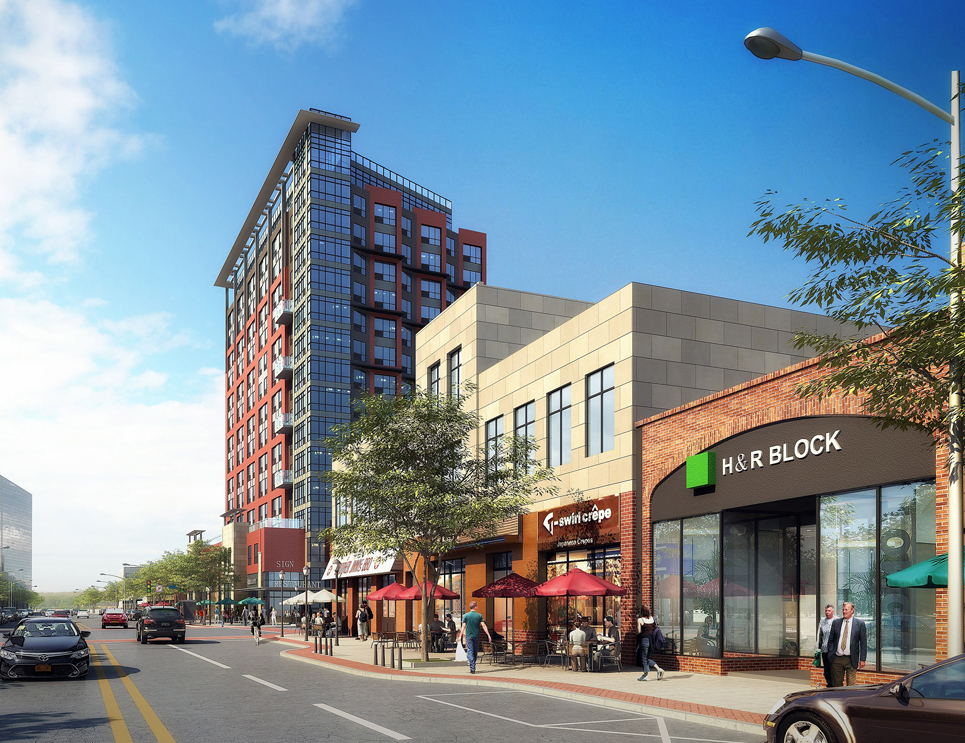

In White Plains, Phoenix-based developer Alliance Residential has received approvals to build 434 apartments on the corner of East Post Road and Mamaroneck Avenue, which will also include about 8,000 square feet of retail space. It is interesting that this project and the nearby 700-unit project by Lennar are by large national developers, as opposed to the primarily local developers who have been active in the county in the past.
The Continuum, a 288-unit apartment building, opened in November. This is the first phase of a two-phase project by LCOR, which developed the 15 Bank St. residential project some years ago. Both of these projects are within walking distance of the White Plains Metro-North station.
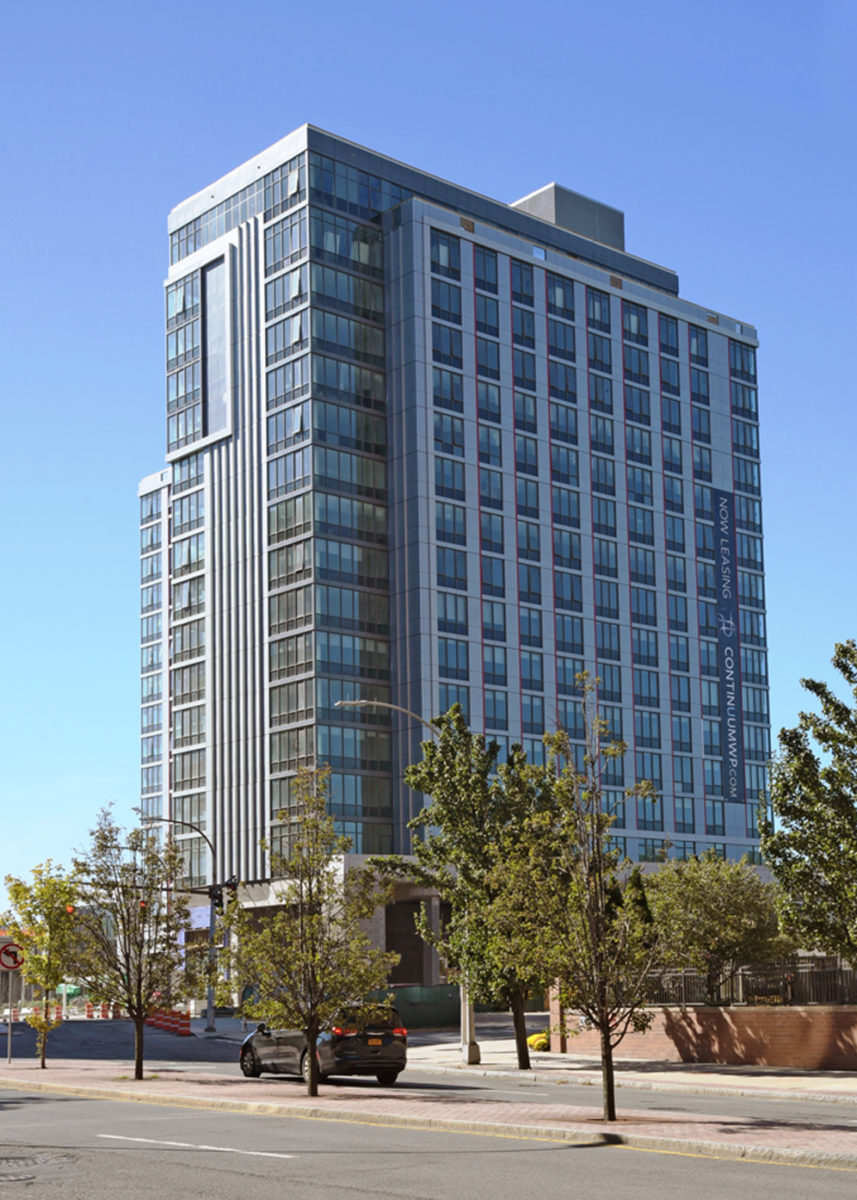

Many high-rise multifamily projects are under construction in Yonkers, with quick access to the Metro-North station and views of the Hudson River.
New Rochelle”™s master developer RXR has one 28 story multifamily building under construction in the downtown area and has proposed building two more 28-story buildings nearby. MacQuesten Cos. has won the right to develop a large mixed-use building on the current site of the downtown New Rochelle fire station. And many smaller developments are in proposal stages or are already approved and under construction in New Rochelle.
A number of multifamily projects will enter the leasing phase in 2018 and 2019. It will be interesting to see how quickly they lease up and whether incentives will be required as large amounts of inventory come on the market simultaneously. A key economic advantage to the cities will be more residents to spend money in their restaurants, bars and retail stores.
NEXT STEPS IN WHITE PLAINS
The city of White Plains went through a yearlong study of the area around the Metro-North station and has put in place a plan for three city-owned parcels east of the train station that envisions multifamily residential with ground-floor retail, open spaces and bicycle and pedestrian access to the station. With that framework in place, it put out requests for interest in June to see if developers are interested in taking on parts or all of this huge project. As of this writing, there has been no communication to the public on the results of that effort.
Mack-Cali is in the process of emptying a 60,000-square-foot office building at 1 Water St., which is just across from the Metro-North parking structure. The company”™s plan for the site is to have it rezoned as residential, as it is included in the train station district, and have its Roseland subsidiary tear the building down and build a larger multifamily rental building. This is another example of a developer repurposing an office site to a higher and better use.
The owners of the White Plains Mall are proposing that it be demolished and replaced with a large mixed-use development. This is a site in the city that desperately needs redevelopment and it is an encouraging sign.
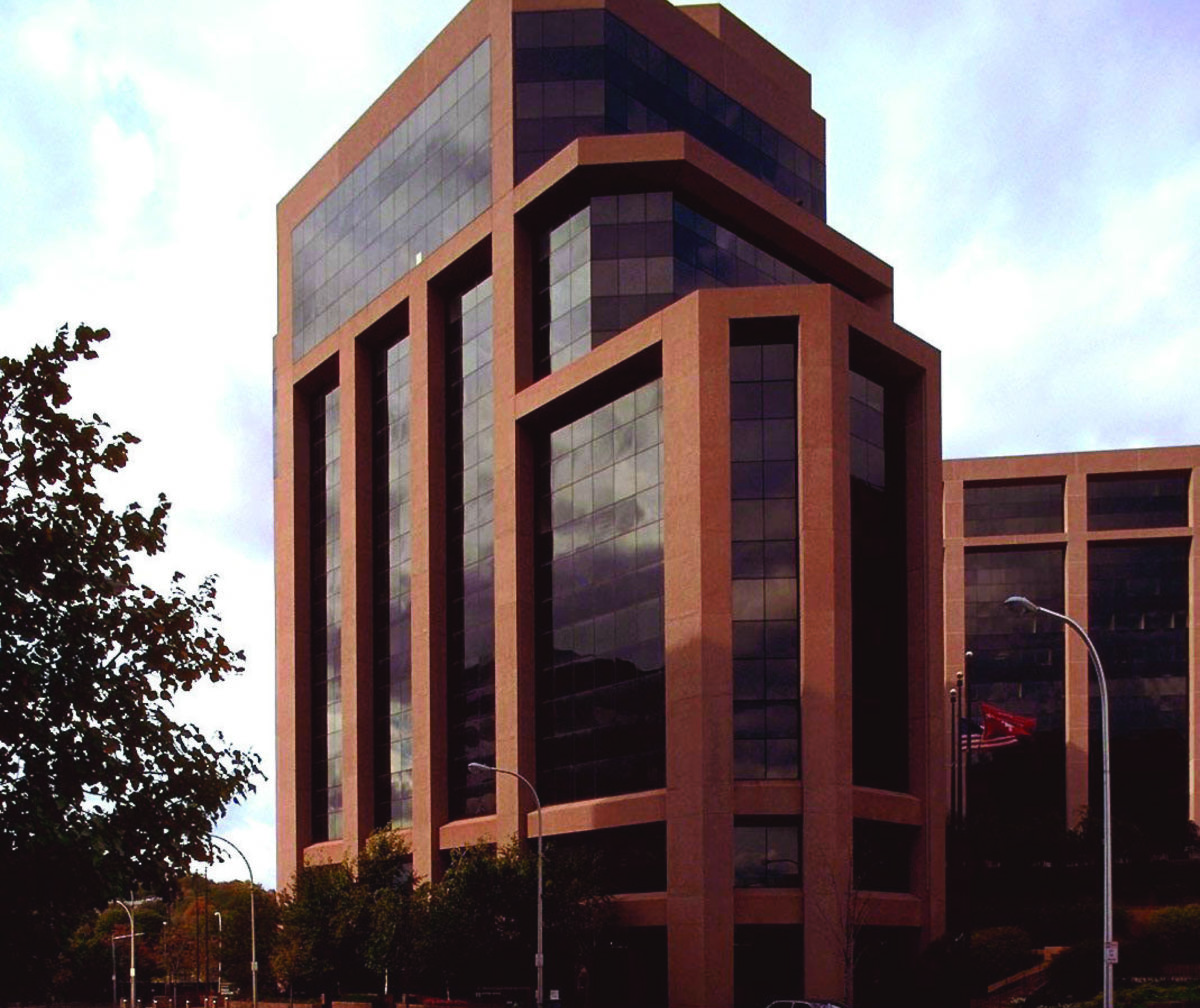

There are two smaller residential projects under construction in an industrial area near the Metro-North tracks in White Plains. One is a conversion of an old office building that has been empty for decades to residential lofts and another is a ground-up loft development with a mini craft beer brewery space on the ground floor.
Retail is very important to these Central Business District (CBD) developments, as all developers and municipalities want walkable downtowns with chic boutiques, restaurants, bars and craft beer bars to attract residents and add interest to the neighborhoods. Unfortunately, these types of retail operators are in short supply and I doubt the very small ground-floor retail units of large apartment buildings will attract this type of retail. Service businesses like dry cleaners and delis do not fit the bill. The two new buildings being built along the Metro-North tracks in White Plains will have very little retail space and all of the existing retail, restaurants and service businesses are many blocks away on Mamaroneck Avenue. Part of the city”™s plan for the train station district looks to have a large complement of ground-floor retail space.
LET”™S TALK ABOUT INCENTIVES
The various IDAs ”” industrial development agencies, which give out tax incentives ”” are busy considering many, many new projects. Every developer is asking for the standard sales tax incentives on building materials as well as exemptions from the New York state mortgage recording tax. But the biggest item is the PILOT, or payment in lieu of taxes, that permits developers to get significant discounts on their projects”™ real estate taxes for a period of 10 to 20 years.
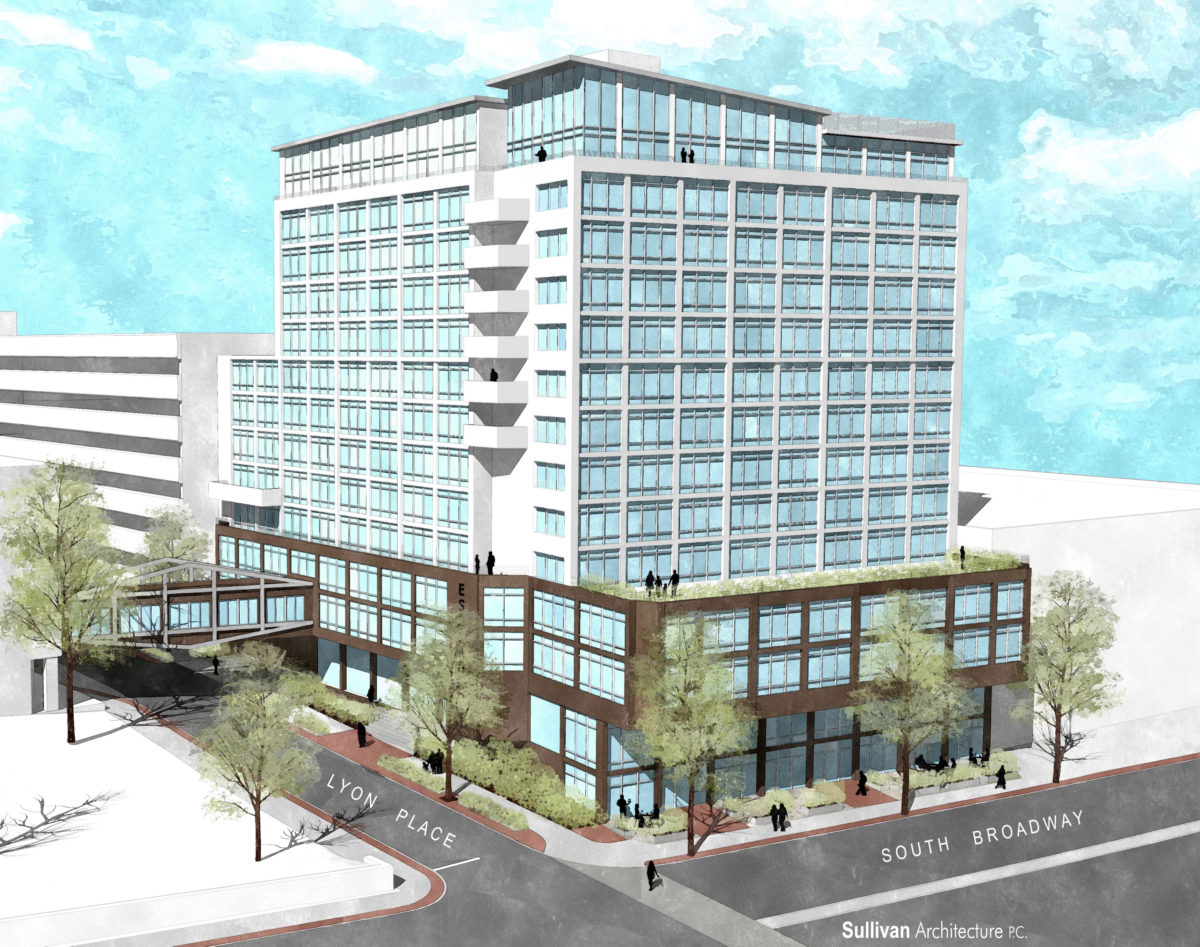

Only a few of these projects, like the former Esplanade senior citizens residence and the former AT&T building in White Plains, are renovations of existing buildings. But these are very significant renovations, with the developers of the former AT&T building proposing to remove the entire exterior of the building and construct a complete new façade. The cost of construction today is very high. That fact, coupled with high land costs, particularly in transit-oriented development areas and the amenities that are required to attract tenants today, leads to lower returns for developers.
It should be noted that, while PILOT programs significantly reduce the amount of property taxes paid, they are almost always significantly more than the taxes that were being paid by the smaller building that occupied the site before the new construction takes place. For instance, real estate taxes on a single-story industrial building are relatively low. If a developer buys that building and builds a high-rise apartment building on that site, even PILOT payments generally far exceed what would have been paid by that much smaller industrial building.
In order for market rents to be somewhat affordable, the cities need to partner with the developers on PILOTS. They are not doing it willy-nilly. The IDAs are analyzing the construction numbers and the expected returns on each project to make sure that they are in line with national and market averages. Taxpayers are rightfully concerned about property taxes. But the reality is that these incentives are helping to keep taxes in check rather than increasing the burden on homeowners.
The vast majority of the multifamily units are being built as small studio and one- bedroom apartments. A few proposed developments are even being built as micro units, averaging around 500 square feet each. All of these new buildings are making up for the lack of space in the apartments with roof decks, pools, game rooms and other common spaces that will attract renters.
But two- and three-bedroom apartments bring up the specter of children living in them that would cost money to educate and take space in already overcrowded schools. Communities are not anxious to bear the cost of educating children that would potentially live in these new developments. Hence the bias toward small apartments.
I have heard for years that the key market demographic for these buildings are 50 percent millennials and 50 percent empty nesters. I do not know of many downsizing empty nesters who would go from a house to a studio or a one-bedroom apartment. I have heard that some of the fully approved large projects in White Plains are pausing to “re-think” their development plans. It will be interesting to see if they go back to the cities to modify their approvals and how they ask to modify them.
WATERFRONT DEVELOPMENT ON BOTH SIDES OF THE COUNTY
In Sleepy Hollow, SunCal is moving earth on the former General Motors site on the Hudson River. The last minivan rolled off the GM assembly line in 1996 and it has taken


Workers lay new infrastructure on Beekman Avenue in Sleepy Hollow next to the former General Motors auto plant property, where about 1,200 residences are planned. Photo by John Golden
more than 20 years to get to this point of development. It will take another eight to 10 years to fully build-out the 67-acre site. At full build-out, there will be almost 1,200 housing units, plus a boutique hotel, retail and a small amount of office space. River views on one side and easy access to the Metro-North Hudson Line is a compelling combination for buyers and renters. Unlike the Central Business District projects, I can see an attraction for empty nesters in the types of products that are being built here, which include larger condominium apartments and townhouses.
Another for-sale project under development is Watermark Pointe in New Rochelle, which sits directly on the Long Island Sound on the site of the former Beckwith Pointe Beach Club. It will be a 72-unit gated community whose low-rise 2,500-square-foot apartments are anticipated to be sold at prices averaging about $1.6 million dollars.
New Rochelle is finally making progress on moving its sanitation yard off the waterfront on Echo Bay to make way for Pratt”™s Landing. This is a large-scale mixed-use development that will open up the waterfront on the Long Island Sound for residential, hotel and retail/restaurant uses.
Also being built for sale is the Sun Properties project in Rye Brook within Reckson Executive Park. These are primarily semi-attached homes, with some freestanding homes, priced from $950,000 to about $1.4 million. This development was approved after the site was marketed for more than a decade as a site for 350,000 square feet of office space and after local opposition defeated a plan to build a multi-rink hockey facility on the site due to concerns about traffic. Homeowners will enter the site driving past the existing six office buildings.
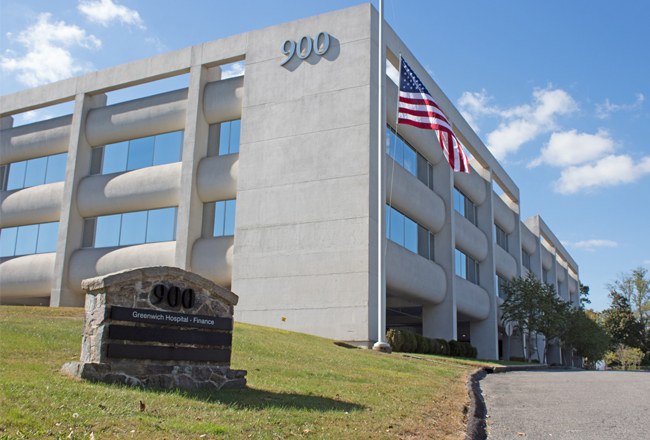

In Rye, a new 90-unit condominium development has been fully approved on the site of an office building that has been vacant for more than a decade. This will be built under the St. Regis brand, which will likely increase the value of the units, as the Ritz Carlton brand has in White Plains. These will represent another opportunity for empty nesters to purchase high-quality, low-maintenance housing in their neighborhood when they are ready to downsize.
The owners of the office building at 900 King St. in Rye Brook have proposed demolishing the mostly vacant 215,000-square-foot structure and constructing a 269-unit senior housing campus with age-restricted townhouses and apartments and an assisted living facility. This former IBM building, with floor plates of over 100,000 square feet each, has struggled to attract new tenants since 2004.
A partnership involving the same owner, New York City-based George Comfort & Sons, has purchased the former Good Counsel campus on North Broadway in White Plains, where it intends to build a combination of assisted living, rental apartments and student housing to serve the adjacent Pace University law school. The city Common Council is reviewing that plan.
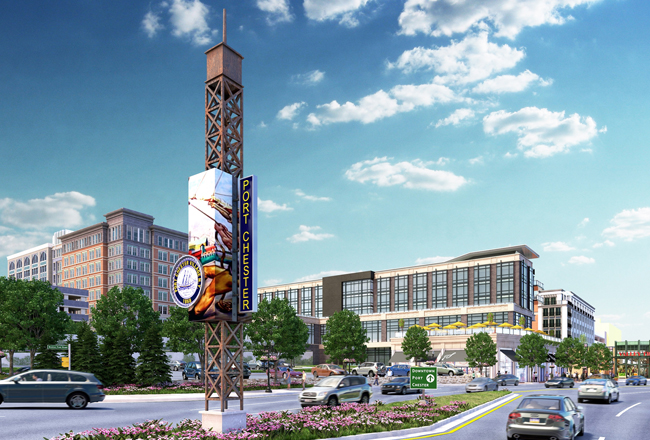

In a reversal in Port Chester, Starwood Capital has pulled out of its proposed redevelopment of the former United Hospital campus. They are putting the 15-acre site on the market after receiving required zoning changes to develop a hotel, office, retail, senior housing and multifamily housing on this site. This is a blow to the village, which expected tax revenues and benefits to its school district from the project. The village is also currently reviewing a number of smaller development proposals for its downtown area.
It is logical that demolitions and conversions are taking place in lower Westchester, a mature area with very little vacant land. On North Broadway in Yonkers, Simone Development has turned the Boyce Thompson Center, which had been a vacant, graffiti-scarred shell for more than 40 years, into a successful mixed-use development with medical, office and retail tenants. They are not only using the existing historic building but have added a 15,000-square-foot building on the site for medical use. How will the retail and restaurants mix with medical uses? Think of the huge amount of traffic that will pass through this project on any given day and how much the retail tenants will benefit from it.
BIOTECH IS GETTING READY TO BOOM
In mid- November, Regeneron received site plan approval for the 100-acre site it purchased adjacent to its Landmark at Eastview campus in Greenburgh. The approvals for the new site are for up to 1 million square feet of construction and the site is “shovel-ready” for the company to expand in phases, as its business requires. It took about a year to get this approval, which is lightning-fast in Westchester for a project of this size. It was also an innovative approach by Regeneron, getting the entire site approved at one time so it can respond to company needs as they occur. Bravo to Regeneron and the town of Greenburgh. The pharmaceutical company is the town”™s largest employer and certainly the fastest-growing company in the county.
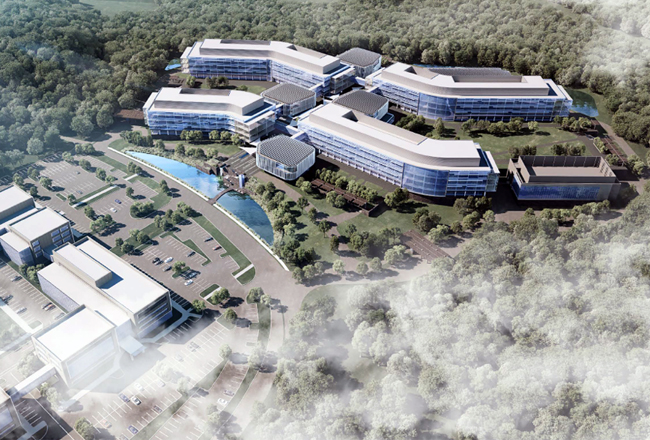

Regeneron at the close of 2016 also entered into an agreement to buy the more than 1.1 million-square-foot Landmark at Eastview campus, on which its current landlord had developed hundreds of thousands of square feet of custom-built laboratory buildings for Regeneron.
Westchester County finally approved a 99-year land lease for the site known as the North 60 to an entity controlled by John Fareri. This deal has been in the works since 2012. His vision is for a 3 million-square-foot development consisting of laboratories, research medical space, office space, retail and a children”™s museum. It is estimated that the entire project will take 25 years to build out.
This will be a boon to Westchester”™s biotech hub, but will it be too late? As there is virtually no wet laboratory space available in the county, tenants have had no choice but to migrate to Rockland County or to New Jersey, where such sophisticated product is available. The Fareri project will take years to get through approvals and install infrastructure before it begins to build any buildings. I am a great proponent of this project but it is important to get it up and running as soon as possible.
OUR OFFICE MARKET IS PRETTY HEALTHY
As always, I have been helped in the preparation of this year-end review by Karolina Alexandre, research manager for Newmark Knight Frank, who has her finger on the statistical pulse of this market. She says: “Overall, 2017 was a great year for the Westchester county office market. Two large new leases, New York Life and Sumitom, significantly reduced availability in the White Plains CBD. The extremely high vacancy rate in the northern submarket continues to artificially inflate the county”™s overall vacancy rate. If three large vacant office campuses in the north were removed from the statistics, the county”™s overall availability rate would plummet from 23 percent to 15.7 percent. Right now we have a healthy, more balanced market, with rental rates floating up a bit.”


Our office inventory is also shrinking, primarily due to demolition of obsolete buildings. Over 420,000 square feet of space is being demolished on Corporate Park Drive alone. About a decade ago, the total Westchester county multitenant office inventory was approximately 32 million square feet. This year, it is less than 28 million square feet and about another 350,000 square feet that is under consideration for demolition.
We are not building more office space, primarily because demand does not justify it. To build a new building at today”™s costs with the technology and features that tenants demand, developers would have to achieve rents significantly above market in order to break even, which is not likely to happen.
The White Plains CBD submarket has been the star of the year, with almost 275,000 square feet of new absorption. Leasing activity has been very slow in the 287 West submarket, and horrible in the north submarket. Newmark Knight Frank shows a 39.6 percent Class A vacancy in the north, which is staggering.
The White Plains CBD has seen some blockbuster deals this year, notably the 176,000-square-foot New York Life Insurance lease at 44 S. Broadway and the 101,000-square-foot lease by Sumitomo Bank at 1 N. Lexington Ave. Both leases represent fresh absorption, which is critical to our market. Danone also took about 80,000 square feet, but in former retail space. There were also a sizable number of renewals of law firms and other midsize tenants.
Mack-Cali recently called off a major renovation it was planning for the Westchester Financial Center. Earlier this year, the REIT had purchased the 82,000-square-foot Pace University condominium that occupied 11 floors of the Martine Avnue building. This was one of the original urban renewal projects in White Plains and it contains almost 700,000 square feet of space. It occupies an envious position directly opposite the Metro-North station. However, the Financial Center has done very little leasing in recent years and likely will not until it undergoes a significant refresh.
The north submarket continues to be a disaster. Somers is the epicenter of empty corporate office space. About 1.6 million square feet of space has been vacated by the Pepsi Bottling Group and by IBM. Both of these empty campuses were purchased by Mexican billionaire Carlos Slim, but I cannot figure out why.
When combined with the 287,000-square-foot former MBIA campus at 113 King St. in
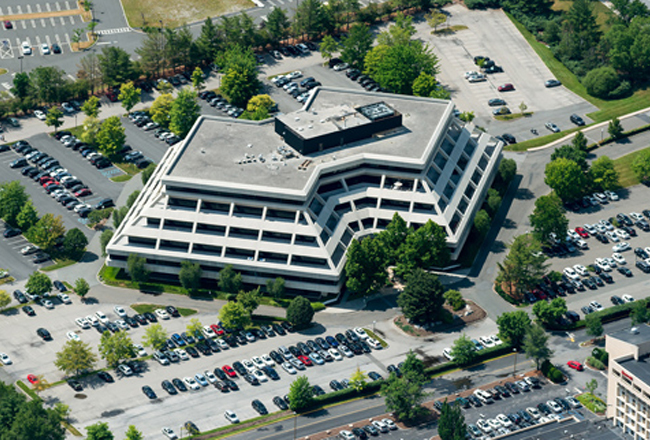

Armonk, these spaces alone are adding 7.3 percent to the overall county availability rate. With their mammoth size, these properties need a blockbuster tenant to reopen the buildings. Such massive tenants are in short supply in our county and lately are being attracted by CBD settings much more than suburban settings farther from New York City. I honestly do not know how these buildings are ever going to be repopulated.
Amazon has already received 238 proposals for its HQ2. I am sorry to say that, in my opinion, they are not coming to Westchester. While we do have a lot of their criteria in place, our existing office stock is too old and too small. Our market in the more desirable lower part of the county is now generally healthy. The 1.6 million square feet of the most logical space ”” the former Pepsi Bottling Group and IBM space in Somers ”” is just way too far north, without sufficient internet and cellphone infrastructure. They are also much farther away from New York City and the major international airports.
Lease renewals represented 63 percent of total leasing activity in the third quarter of the year, which was an increase of 73 percent over last year”™s renewal activity. I think part of this is due to reduced inventory in the lower county submarkets, which means there are fewer options for tenants to relocate. We are once again in a part of the real estate cycle where very few large blocks of space of 50,000 square feet or more are available.
Wegman”™s Supermarkets bought three empty office buildings on Corporate Park Drive in Harrison from Normandy Realty Partners to develop a 125,000-square-foot supermarket. And Toll Brothers bought two more empty office buildings in the same park for its 421-unit multifamily residential development. So the county”™s first suburban office park, which was developed in the 1970s, is now being converted to other uses, demolishing some of the first buildings built on the Platinum Mile. The Toll Brothers development will be the first suburban multifamily rental housing development and I will be curious to see how it will compete with all the Central Business District developments, as not everyone wants to live in a city.
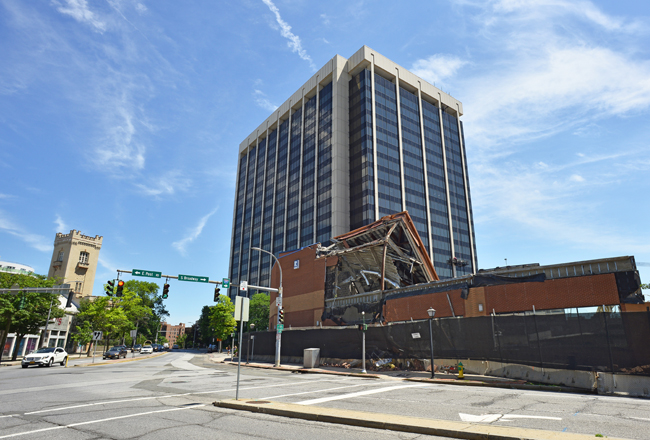

Office buildings are also being sold. The 850,000-square-foot Westchester One, aka 44 S. Broadway, in the White Plains CBD was sold to a Brooklyn-based buyer who is new to the county. The seller, Beacon Capital, had paid $172.5 million for the building in 2006 and sold it for $138 million. This building was the recipient of the largest new office lease in the county in 2017, for 176,000 square feet by New York Life, which was signed before the sale took place.
In Tarrytown, RXR sold 660 White Plains Road to GHP and 555 White Plains Road to Robert Martin Co. While 660 has now gone to 100 percent occupied under its new ownership, 555 is outdated and almost empty, with Tappan Zee Constructors, the consortium of contractors building the new Mario Cuomo Bridge, the only tenant. The buyer will demolish it, which will remove 135,000 square feet of office space from the inventory and is thinking about uses for the site, including self-storage and a large fitness center.
The two remaining buildings that RXR is trying to sell, 560 and 580 White Plains Road, are poorly occupied and require significant capital investments to compete in the marketplace. They will likely be purchased at low prices by a value-add buyer who will bring them up to standard and re-tenant them.
INDUSTRIAL INVENTORY IS IMPLODING
At the present time, real estate investors generally consider industrial/warehouse properties more valuable than office properties. Simone Development, a very savvy commercial real estate owner-operator, paid $154 per square foot for a dated 35,000-square-foot metal warehouse building in Elmsford. It has a deal with Tesla to lease the entire building at a very high rent for a service department. In contrast, the above-referenced office building at 555 White Plains Road was purchased at about $40 per square foot and would require many millions of dollars of renovation work if a new owner wanted to re-lease it as office space ”” and the rents would be within a few dollars per square foot of each other. No question that the warehouse would be a significantly more lucrative investment.
Industrial rents that used to be $10 to $12 per square foot are now $14 to $18 per square foot. And generally these buildings are rented on a triple-net basis, where the tenant pays all of the operating costs and real estate taxes in addition to the rent. No other product type is seeing these types of rent increases. In fact, office rental rates are pretty much still on par with what they were 30 years ago, notwithstanding significant increases in operating expenses, real estate taxes and tenant buildout costs over those decades.
Mack-Cali demolished an old asbestos-ridden office building in one of its flex parks in Elmsford last year and built a 35,000-square-foot warehouse building. As I predicted in my last year-end report, it was leased to a single credit-worthy tenant before it was completed, at a very high rent. Users of this type of space have very little leverage with their landlords, as relocation alternatives are few and far between. Landlords know it and rents will continue to rise due to shrinking inventory of this product type.
In the cities of White Plains, Yonkers, New Rochelle, and Mount Vernon, industrial properties in and close to the CBDs are being upzoned for higher and better uses, including high-rise residential development. No one wants to see old industrial buildings next to their new luxury apartment building. And new zoning initiatives allow developers to build high-rise buildings on sites that are typically occupied by single-story buildings. This makes them worth much more than they would be for their existing uses. So we are losing some old but precious industrial inventory that will never be replaced.
MEDICAL IS MASSIVE
Medical uses continue to impact our market. One of the largest leases this year was a 50,000-square-foot lease at 1133 Westchester Ave. to Hospital for Special Surgery. They
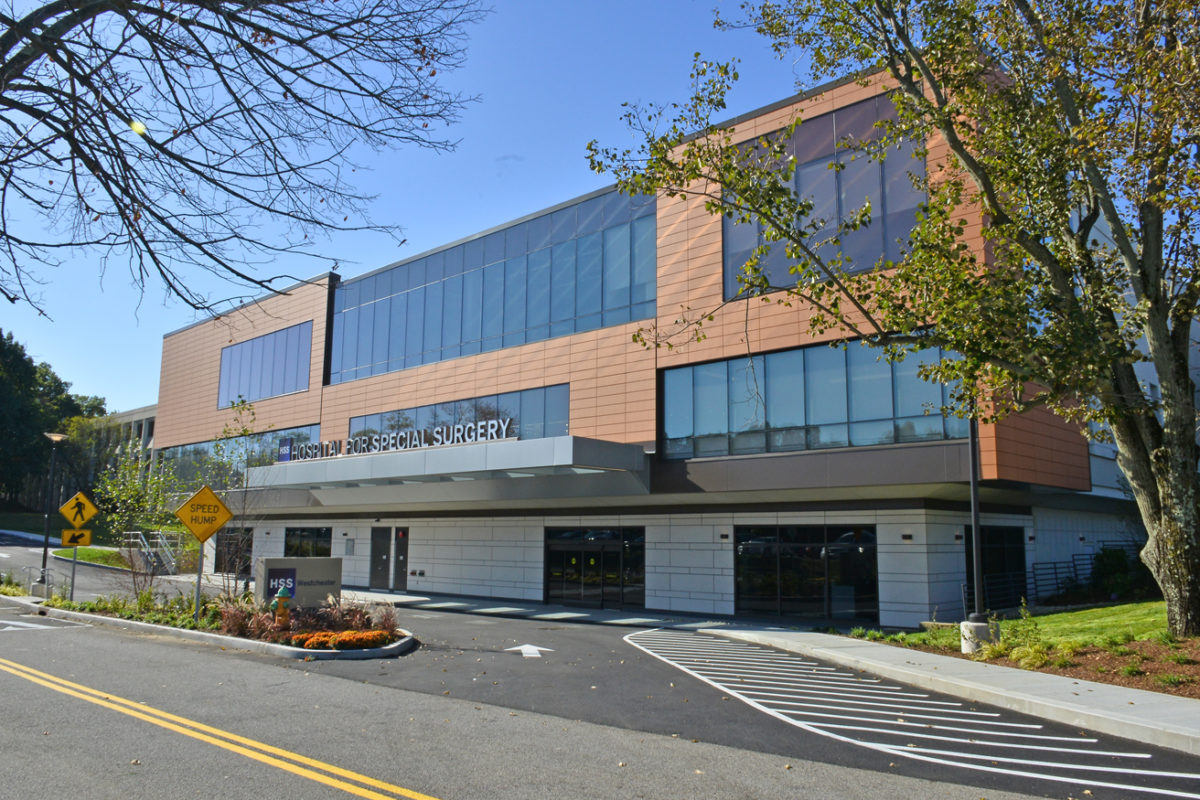

join WestMed, Memorial Sloan Kettering and a multitude of smaller medical tenants on what used to be called the Platinum Mile and is now more commonly referred to as the Medical Mile.
The largest office deal in the county in 2017 was the 296,000-square-foot renewal of all of the various Montefiore Medical Center leases at Mack-Cali”™s South Westchester Executive Park in Yonkers. Even though it sounds like a medical lease, the functions in these spaces are all office and data center. But this shows you the extent of the Montefiore footprint, as it also purchased the 300,000-square-foot former Kraft Foods research facility in Tarrytown a number of years ago, which it also uses for administrative offices.
ENT & Allergy Associates recently signed a 38,000-square-foot lease at 660 White Plains Road in Tarrytown for its headquarters, call center and data center operations. The practice is leaving 560 White Plains Road, which RXR has been having difficulty in selling due to its already low occupancy. ENTA is also relocating its White Plains office to 222 Bloomingdale Road in an expansion to 15,000 square feet.
WHAT”™S HAPPENING IN RETAIL?
Retail is in a very disruptive period. Danone, the French yogurt company, is moving its headquarters to White Plains from Greenburgh. But it did not lease office space. It leased the last vacant floor of the former Fortunoff retail store at the corner of Maple Avenue and Bloomingdale Road. Reportedly, the executives found the office product available in White Plains to be “boring.” So they asked White Plains officials to rezone the former Fortunoff building”™s remaining empty floor to office.
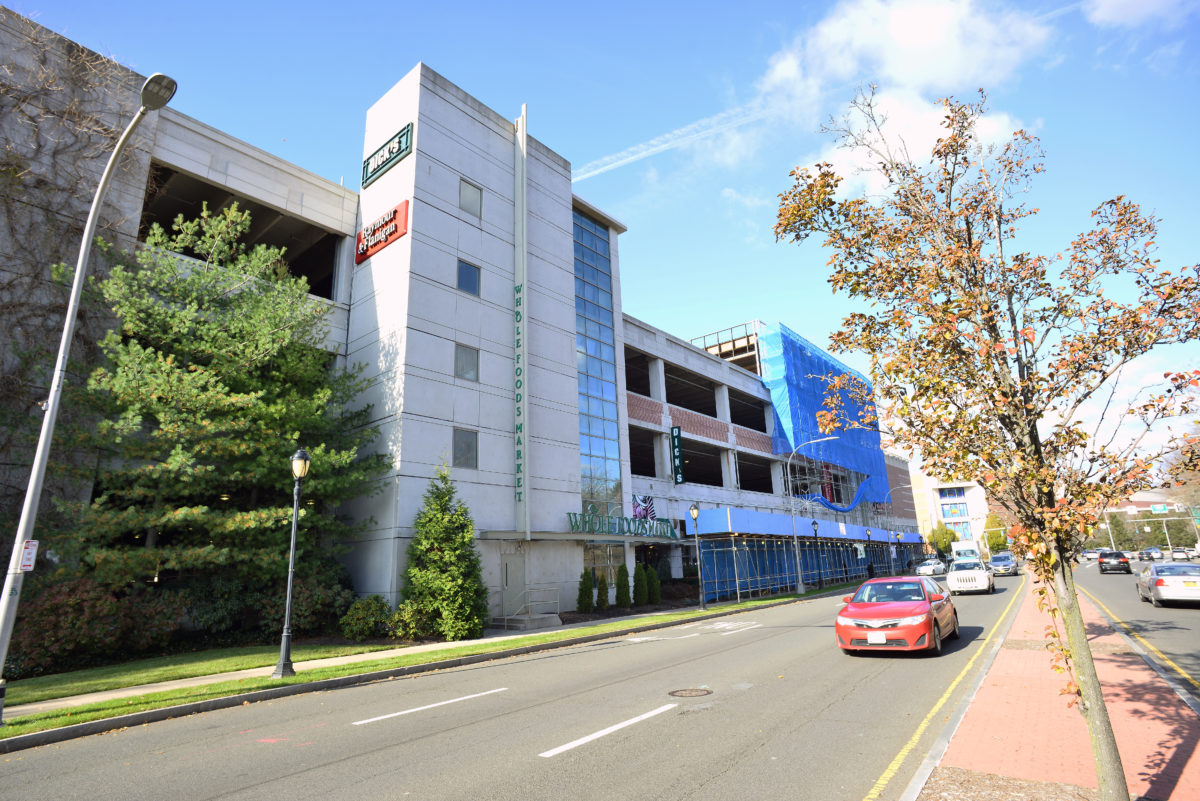

Let”™s look at the logic. They leased about 80,000 square feet of space with 20-foot ceilings. They will put in some mezzanine space and it will be a very cool installation. Their parking is literally at their front door. They will have high views, and Whole Foods and The Cheesecake Factory in their building. They will use the former Morton”™s The Steakhouse space on the ground floor as a test kitchen. (Morton”™s has relocated to the corner of Mamaroneck Avenue and Main Street, a much better location in the center of the city.) The building is directly at the entrance and exit to Interstate 287, with the Holiday Inn Crowne Plaza hotel and The Westchester mall right across the street as additional amenities. Surrounding apartment developments will hopefully reinvigorate the retail on the East Post Road corridor, which has been suffering from very high vacancies for decades. This was a very large deal that did not take any office space off the inventory. I think it was a very creative play by the tenant that checked a lot of boxes for overall employee satisfaction.
The former Sports Authority building on Route 119 in Greenburgh is being redeveloped as a Jaguar/Land Rover dealer. The smaller Volvo and Subaru dealers across from the new Jaguar development are going to be totally redeveloped as auto dealerships under their new owners. The former site of the Hawthorne Multiplex Cinema on Route 9A has been redeveloped as a huge Audi dealership.
It appears that our malls are doing pretty well, suffering no anchor store closings. But as boutique shops go out of business, they are being replaced by better-credit national chain tenants, which tends to homogenize the malls, making the Galleria Mall and The Westchester look pretty similar in their tenant mix.
But retail in the smaller towns is definitely suffering. Scarsdale, Larchmont and Rye have significant retail vacancies. Mamaroneck opened up its retail zoning to include restaurants a few years ago and that category leased most of the available space. The Bronxville retail market has relatively few vacancies.
PATIENCE NEEDED TO DEVELOP IN WESTCHESTER
Chappaqua Crossing, the former Reader”™s Digest headquarters in the town of New Castle,
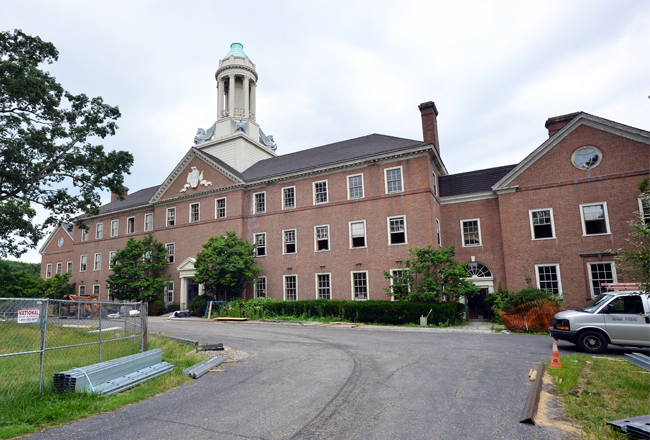

Photo by Bob Rozycki
is in construction on its retail component about 13 years after the site was sold to its present owners. A 120,000-square-foot retail center will contain a 40,000-square-foot Whole Foods Market and a LifeTime Fitness facility of about the same size along with some smaller shops. The iconic Georgian-style main building is being converted to 64 units of market-rate and affordable housing. The 500,000 square feet of office space is about one-half leased and the former auditorium has been deeded to the town of New Castle as an arts center. The owners are still seeking approvals for 91 for-sale townhomes to be developed. It has been a very long slog for this development and the final product looks a lot different than the original concept, but it is finally on its way.
In early November, the White Plains Common Council finally approved a downsized development by the French American School of New York on the grounds of the former Ridgeway Country Club. This came seven years after the school bought the site. Notwithstanding its original plan to use a large part of the site for public gardens and an arboretum, the entire Gedney Farms neighborhood has been fighting the project tooth and nail.
Elmwood Country Club in Greenburgh has been closed and the land sold to a New Jersey-based company that intends to develop residential on the property. This is part of a trend in the county, with Hampshire, Ridgeway and now Elmwood country clubs closing and developments being proposed on all the sites. We will have more country clubs closing, as that lifestyle is not resonating as much with younger people as with the senior citizens. Every closing will be a battle with the surrounding area on how to develop the sites, which are typically about 125 acres.
Neighbors always seem to want only what they have known, but as lifestyles change and different types of real estate products are in demand, these sites, particularly in lower Westchester, present large opportunities for developers in a very densely populated part of the county. We have a large number of “Cave People” in Westchester. They are otherwise known as Citizens Against Virtually Everything and typically react negatively to any potential changes in their neighborhoods. This is primarily why development takes so long and is so expensive here.
Westchester County will look very different in a few years, as urban skylines change with new high-rise developments. The office market will continue to tighten and will begin to rebalance to the landlord side, after being a pure tenant”™s market for decades. I honestly do not know what will happen with the former IBM and Pepsi sites in Somers, though I would suspect that at least some portions of those sites will ultimately be redeveloped as residential.
This has been a year when great changes in our real estate landscape have taken place. The next few years, as our cities continue to be built out and attract new residents, will be interesting to watch.
























Lower Westchester County is on the verge of becoming a Borough without the mass transit needed to accommodate transportation – roadways are already parking lots..
TOO MUCH WILL FAIL !